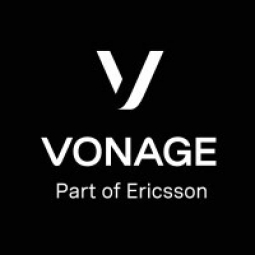Technology Category
- Sensors - Camera / Video Systems
- Sensors - Level Sensors
Applicable Industries
- Education
- Healthcare & Hospitals
Use Cases
- Personnel Tracking & Monitoring
- Speech Recognition
Services
- System Integration
About The Customer
Chi Mei Hospital, located in Tainan City, Taiwan, is the largest integrated health care system in the Yunlin-Chiayi-Tainan area of Taiwan. The hospital provides high-quality health services to more than three million patients and is committed to offering safe, high-quality medical care, as well as supporting the health and well-being of its staff and community. The hospital is also a center of education for medical professionals. According to Lin Jingjia, senior system analyst and programmer at Chi Mei, the medical industry in Taiwan is dependent on continuous innovation and the ability to adapt to advanced technology, especially for medical centers.
The Challenge
Chi Mei Hospital in Taiwan was grappling with the challenge of increasing efficiency and reducing response times for acute health issues that require specialized care and have a narrow time window for treatment. The hospital, which is the largest integrated health care system in the Yunlin-Chiayi-Tainan area of Taiwan, serves over three million patients and is committed to providing high-quality medical care. However, the manual process of alerting medical staff of critical emergencies was time-consuming and inefficient. In situations such as ST-segment elevation myocardial infarction (STEMI), a serious type of heart attack, every second is crucial and delays in treatment can significantly increase health risks. The hospital needed a solution that could streamline this process and ensure rapid response to such emergencies.
The Solution
Chi Mei Hospital turned to Vonage’s Voice and Video APIs to enhance its communication system and improve work efficiency. The Vonage Voice API is primarily used to alert medical staff of critical emergencies that need immediate attention. When medical staff on duty detect an elevated critical pattern suggesting a patient is having a STEMI, they press an alert button on their mobile device that triggers a Vonage-enabled text-to-speech (TTS) voice alert to the mobile phones of the cardiologist and cardiac catheter staff on call. This system has replaced the previous manual process of identifying and individually calling the relevant STEMI response staff. The Vonage Video API has also been implemented to enable real-time interactive experiences such as video consultations between doctors, remote video meetings between doctors, patients, and patients’ families, and remote video meetings for education purposes between doctors and interns.
Operational Impact
Quantitative Benefit

Case Study missing?
Start adding your own!
Register with your work email and create a new case study profile for your business.
Related Case Studies.

Case Study
Hospital Inventory Management
The hospital supply chain team is responsible for ensuring that the right medical supplies are readily available to clinicians when and where needed, and to do so in the most efficient manner possible. However, many of the systems and processes in use at the cancer center for supply chain management were not best suited to support these goals. Barcoding technology, a commonly used method for inventory management of medical supplies, is labor intensive, time consuming, does not provide real-time visibility into inventory levels and can be prone to error. Consequently, the lack of accurate and real-time visibility into inventory levels across multiple supply rooms in multiple hospital facilities creates additional inefficiency in the system causing over-ordering, hoarding, and wasted supplies. Other sources of waste and cost were also identified as candidates for improvement. Existing systems and processes did not provide adequate security for high-cost inventory within the hospital, which was another driver of cost. A lack of visibility into expiration dates for supplies resulted in supplies being wasted due to past expiry dates. Storage of supplies was also a key consideration given the location of the cancer center’s facilities in a dense urban setting, where space is always at a premium. In order to address the challenges outlined above, the hospital sought a solution that would provide real-time inventory information with high levels of accuracy, reduce the level of manual effort required and enable data driven decision making to ensure that the right supplies were readily available to clinicians in the right location at the right time.

Case Study
Gas Pipeline Monitoring System for Hospitals
This system integrator focuses on providing centralized gas pipeline monitoring systems for hospitals. The service they provide makes it possible for hospitals to reduce both maintenance and labor costs. Since hospitals may not have an existing network suitable for this type of system, GPRS communication provides an easy and ready-to-use solution for remote, distributed monitoring systems System Requirements - GPRS communication - Seamless connection with SCADA software - Simple, front-end control capability - Expandable I/O channels - Combine AI, DI, and DO channels

Case Study
Driving Digital Transformations for Vitro Diagnostic Medical Devices
Diagnostic devices play a vital role in helping to improve healthcare delivery. In fact, an estimated 60 percent of the world’s medical decisions are made with support from in vitrodiagnostics (IVD) solutions, such as those provided by Roche Diagnostics, an industry leader. As the demand for medical diagnostic services grows rapidly in hospitals and clinics across China, so does the market for IVD solutions. In addition, the typically high cost of these diagnostic devices means that comprehensive post-sales services are needed. Wanteed to improve three portions of thr IVD:1. Remotely monitor and manage IVD devices as fixed assets.2. Optimizing device availability with predictive maintenance.3. Recommending the best IVD solution for a customer’s needs.

Case Study
HaemoCloud Global Blood Management System
1) Deliver a connected digital product system to protect and increase the differentiated value of Haemonetics blood and plasma solutions. 2) Improve patient outcomes by increasing the efficiency of blood supply flows. 3) Navigate and satisfy a complex web of global regulatory compliance requirements. 4) Reduce costly and labor-intensive maintenance procedures.

Case Study
Cloud-based healthcare solution for Royal Philips
Royal Philips wanted to launch its cloud-based healthcare solution HealthSuite Digital Platform in China to deliver services to help cope with challenges related to urbanization and population growth. Philips wanted to achieve this goal by combining mobile, cloud computing and big data technologies. To bring this platform and product to market, Philips required cloud computing and local technical service capabilities in China, in addition to a flexible IT infrastructure that could handle user requests.








